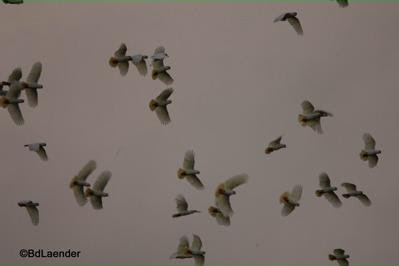


Individuals have reportedly 'self-introduced' from Rasa Island to the mainland indicating that Rasa may be reaching carrying capacity. Thanks to the efforts of the Katala Foundation the population has increased in key sites where the population increased from 23 in 1998 to 260-340 individuals by end of 2015. In its stronghold on Rasa Island, it is threatened by climate change and extreme weather in which droughts caused up to 60% nest fatality. It is also threatened by habitat loss deforestation still continues thanks to both legal and illegal logging, conversion into farmland, mining and road and urban development. 1992, an international captive-breeding programme was initiated, with 39 birds kept under the European Studbook in 2007. Other contributing factors are loss of coastal habitat and persecution as an agricultural pest. US$300 in Manila in 2006) means that chicks are taken from virtually every accessible nest. Populations have decreased dramatically due to illegal trapping for the cage-bird trade. Environmental organizations like the Katala Foundation or Rainforest Rescue are trying to prevent the construction. The efforts for conservation of the Katala Foundation are threatened by plans to build a coal-fired power station on Palawan's coast. There are around 180 found in wilderness conservation in the municipality of Narra and Puerto Princesa, Palawan, particularly in Rasa Island. The species' stronghold is the Palawan Faunal Region where the Katala Foundation has been running the Philippine cockatoo Conservation Programme since 1998. Remnant populations exist on the islands of Palawan, Tawitawi, Mindanao and Masbate. However, by 2008 this was reduced to probably less than 1000. In the early 1990s the total wild population was estimated at 1000–4000. Red-vented cockatoos were formerly widely distributed on all larger and many smaller islands of the Philippines, excluding northern and central Luzon. The IUCN Red List has assessed this bird as critically endangered with an estimate of 430 - 750 mature individuals. It appears to be restricted to lowland primary and/or secondary forest predominantly below 50 m, in or adjacent to riverine or coastal areas with mangroves.


 0 kommentar(er)
0 kommentar(er)
